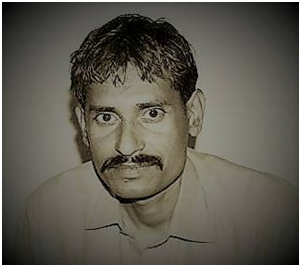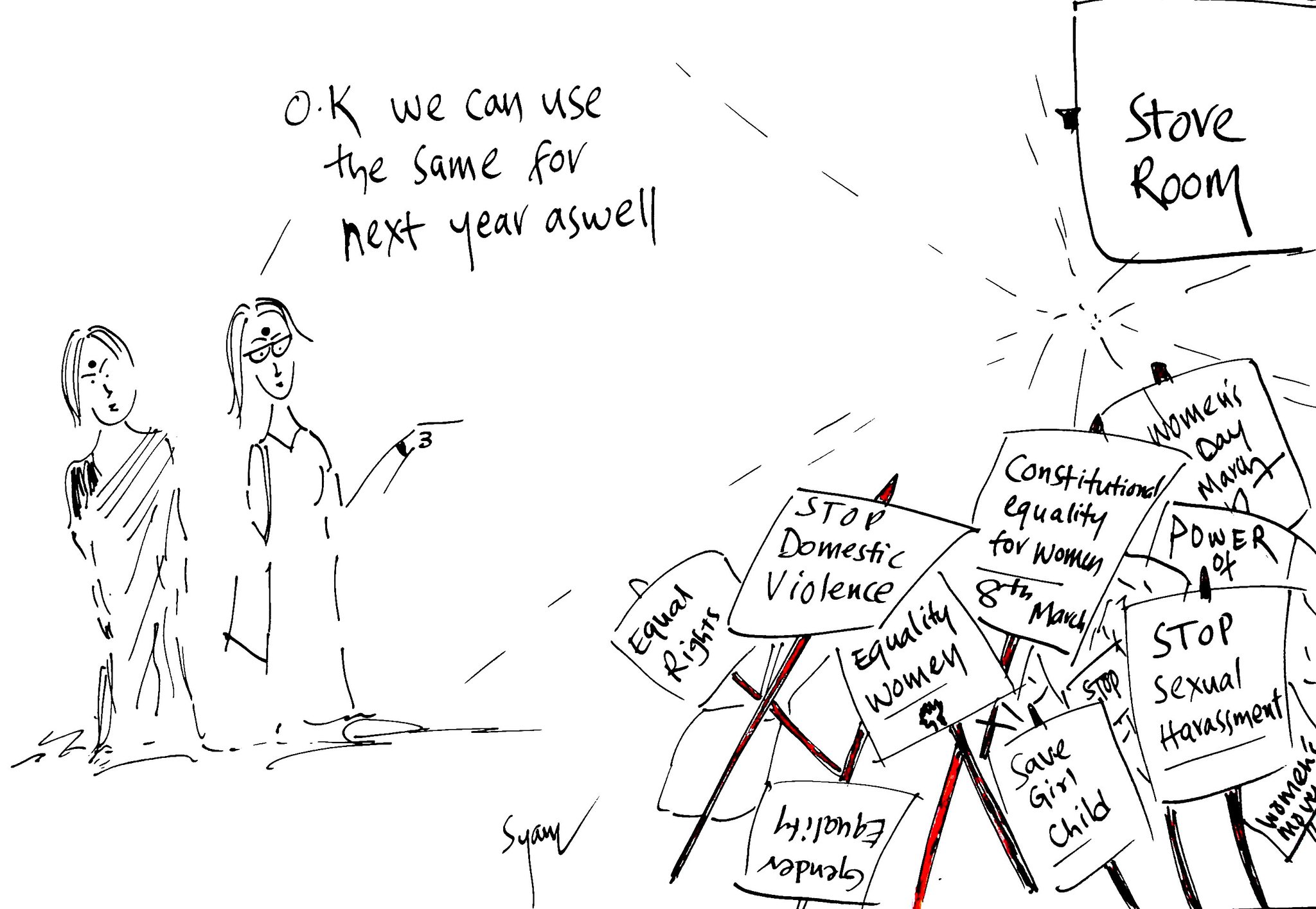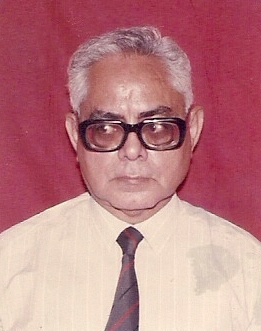Ganpat Rai Bheel
 In district Badin, a corpse of a young Bheel was exhumed out of the grave and thrown in the open. Sahib-i-Iman (true believers of Islam) performed that inhuman act with the religious fervor of utmost sanctity. On the pages of daily Sindh Express, that photo and report were published with some detail. It can be said that this picture truly depicts the existing status of ‘secular and Sufi’ Sindh, and warrants a Dalit a ‘death certificate’ too.
In district Badin, a corpse of a young Bheel was exhumed out of the grave and thrown in the open. Sahib-i-Iman (true believers of Islam) performed that inhuman act with the religious fervor of utmost sanctity. On the pages of daily Sindh Express, that photo and report were published with some detail. It can be said that this picture truly depicts the existing status of ‘secular and Sufi’ Sindh, and warrants a Dalit a ‘death certificate’ too.
This is the status of Adivasi folks of Sindh who are not only living stranded nomadic existence for centuries but they are living that life in the grave as well. This land of Sindh is no more of the land of those Dravidian, of Dalits, whose dead bodies it throws out of its embrace. The invaders, the outsiders spiritually rule over Sindh, and the elegant tombs are raised in their honor, whereas the indigenous owners of that land, are disgraced all their lives, and when they die, they are not even given space in their own land. This incidence was not the act of any lone maniac, but it was the reflection of the whole society, its attitude towards Dalits. This is the bitter truth that when the Dalit of Dravidian origin is ostracized and humiliated all his life and is not even allowed to rest in peace after death.

The exhumed body of Bhooro Bheel. The incident occurred on October, 7, 2013 in village\town Pingrio in Badin district of Sindh. The dead body of a Dalit, Bhooro Bheel was exhumed on the pretext that he was a profane Hindu untouchable and could not be buried in a Muslim graveyard [2]. “Shouting “Allahu Akbar”, or “God is greatest”, the crowd dug out the body and dragged it through the streets of the southern town of Pangrio in a dispute over the location of the grave” reported a newspaper. [2]
The saying ‘kith’s enmity does not last long, she\he repents, returns and repays’, is utterly nonsensical. Adivasis of the subcontinent are not by any means considered as kith and kin of the rest of the folks. These Sindhi folks that descended from Kurds, and came from the valleys of Dajla and Farat (Euphrates and Tigris), they sing the greatness of the Indus valley civilization of the Dravidians, and complain of later invasions of their ancestors, and do not tolerate the existence of those that in fact were the ultimate victims of such intrusions and invasions.
This apathy and antipathy is not uncommon, and not a novel or a new phenomenon. Each instance of Adivasi life is no less tortuous than death itself. This is as if it is a given condition of existence. And when they actually die off physically, they are not considered worthy to become dust with dust. Jogi community usually faces that issue more often than any other Adivasi communities. When any family member of Jogi nomads dies, they cover up the body with rilli (Sindhi traditional quilt). Jogi women, instead of crying or lamenting, observe painful silence. Little children also remain mum out of uncanny terror. When any child unable to control their sorrow, weeps, parents fold the weeping child into their arms so that its voice would not go outside the Jogi settlement.
At that very instant, this world ceases to be the place where humans could live. It is nothing but the jungle ruled by savages, by wolves and ferocious beasts. Men wait for the night to fall. And when the time comes, they secretly begin to dig the grave. The dead body is secretly buried down before the dawn arrives. The raised soil above the grave (that they called ‘udharimitti’, i.e., the borrowed soil’) is flattened after grabbing a handful of it in trembling hands. Having so ensured that it does not show any signs of the burial place, they take their digging stuff, they touch the burial place the last time, say some final prayers in their heterodox manner (My daughter\son\ mother\ father\ pray for our souls!!! ). Soon after the burial, they embark upon their journey to find the other place. Domesticated dogs and donkeys that accompany them are witness to that whole doleful and extremely painful episode and must be feeling proud and grateful not to be one of the human folk. Their pride is by no means unjustifiable. Living a life worse than animals has no other meaning for Dalits than the unending journey of living and dead corpses.
The whole society, the state, casteism, racism, and extremist tendencies, the anti-human values that we harbor are responsible for such a state of Dalits. Dalits too, are responsible for their own humiliation, because instead of reacting against such inhuman attitudes and oppression they accept it as their existential given, and tolerate it.
Dalits have to unite for their human rights, social justice, and equality. Only through their own efforts, Dalits have succeeded, wherever in the subcontinent, they have launched social and political movements. Their own character, unity, and assertion have played the pivotal and decisive role in their struggles. Because, no other Mahtama, or emancipator, will descend to change their lot, neither did it come in the past, nor it will ever come in the future. NGOs, so-called civil society, paper-lion human rights commissions, National or governmental human rights organizations are probably more oppressed than Dalits. Great and grand revolutionaries, popular leaders, nationalists have done nothing except paying lip service to Dalits’ cause. In such a scenario, Dalits or Adivasi folks have no other option except to return to themselves and echo what the poet of resistance from Maharashtra, Namdeo Dhasal said:
Socialism of this world
Communism of this world
And all its renditions
We have tried them all
And reached the conclusion that
Only our own shadow can cover our feet.
This article was originally published in October 2013 in the daily Sindh Express.
Translated by: Sufi Ghulam Hussain
~
References
[1] H. Samoon, “Dead body of a Hindu dug and thrown out of the graveyard,” 7 October 2013. [Online]. Available: http://www.lhrtimes.com/2013/10/07/dead-body-of-a-hindu-dug-and-thrown-out-of-the-graveyard-201784/#ixzz2h4Hpghsl.
[2] Reuters Staff, “Religious tension in Pakistan as Muslims dig up Hindu grave,” Reuters, 8 October 2013. [Online]. Available: https://www.reuters.com/article/us-pakistan-hindus-grave/religious-tension-in-pakistan-as-muslims-dig-up-hindu-grave-idUSBRE9970EF20131008. [Accessed 28 November 2017].
~~~
Ganpat Rai Bheel is an Ambedkarite and Dalit writer based in Mithi, Sindh. He is the most prolific Dalit writer in Pakistan, apart from Dolat Thari. Both have published several books and articles on issues that pertain to Dalits in Pakistan. The credit to introduce the term the ‘Dalit’ as a political category in literature and journalism in Sindh, however, should go to Dolat Thari, who published the monthly newsletter ‘Dalit Awaz’ in the early 2000s. But it was Ganpat Rai Bheel, affiliated with Pakistan Dalit Adab and Scheduled caste federation of Pakistan who in fact articulated Dalit discourse and popularized it in literary circles and among local Dalit activists. Ganpat persistently wrote for Dalits and continues to publish and edit the monthly digest ‘Dalit Adab’ in Sindhi.









